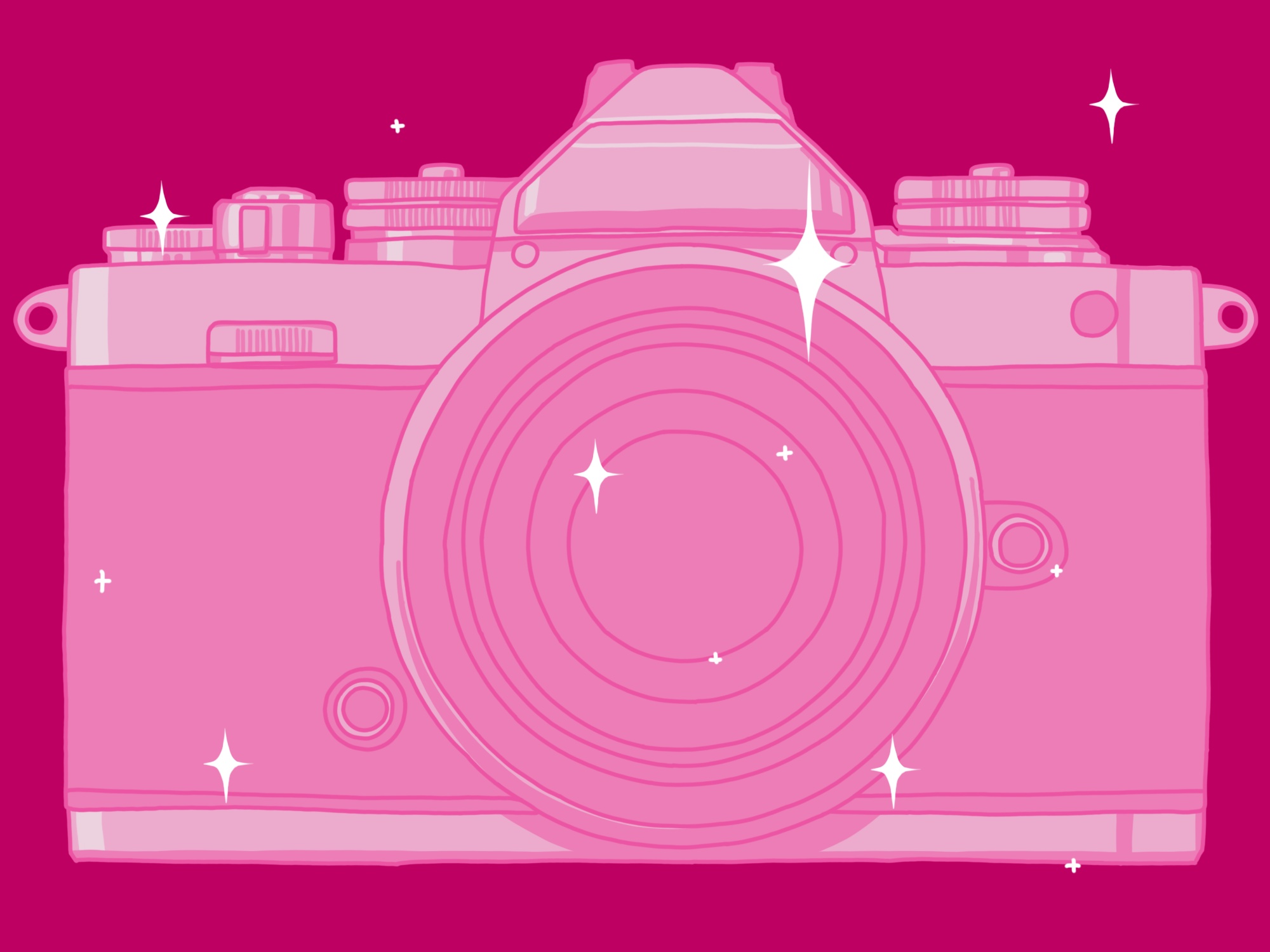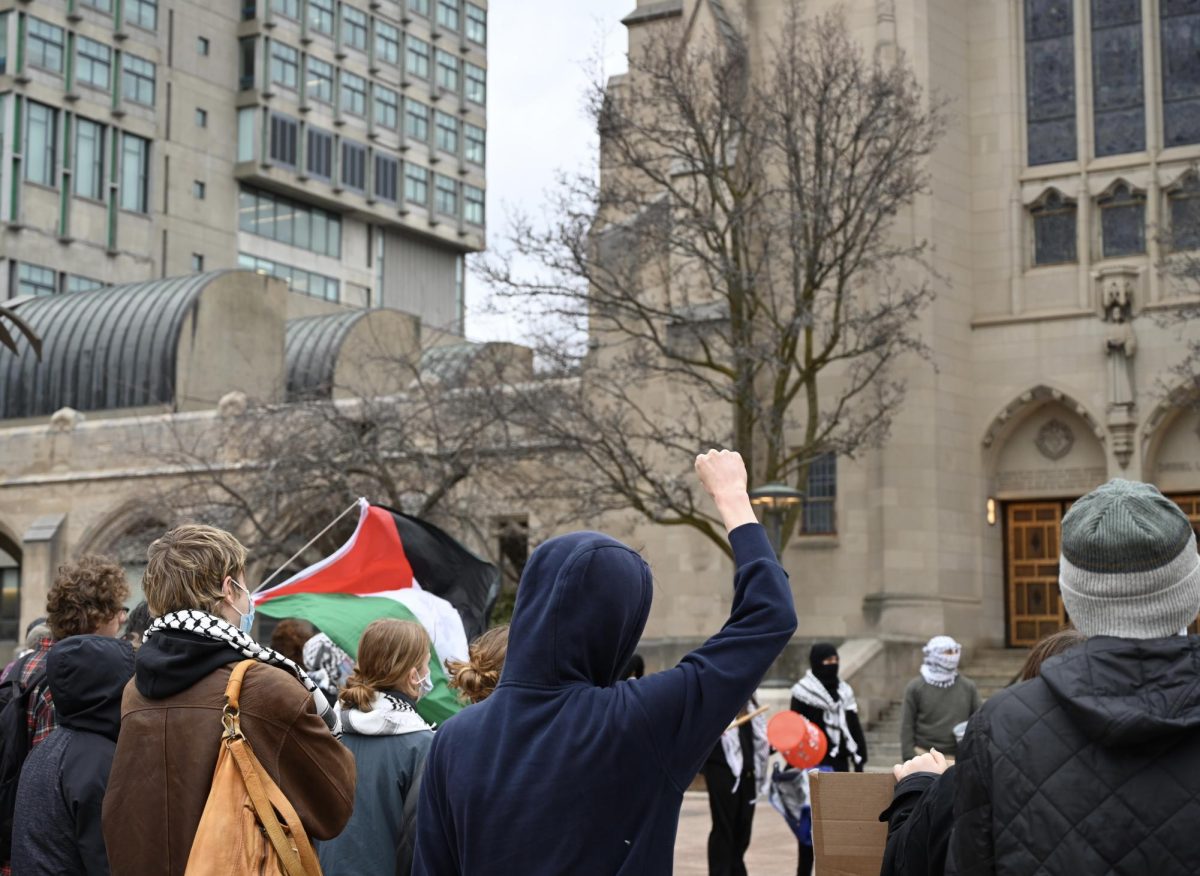A few weeks ago, I went to a concert as a press photographer for WTBU, Boston University’s student-run radio station. I knelt with my back hunched a few feet away from the stage, to be as small as possible and not disturb the audience members in the pit.
Just a few moments earlier, venue security aggressively pointed toward the ground to dictate where I should be — so, there I was. I followed their instructions. However, security guards still came up to me, shoved me back and prodded me in my side to back up.

I then watched security walk up to a male photographer kneeling in front of me, tap him on the shoulder and ask him to back up — of course.
Late last year, I was taking photos at a concert and walking around the venue when a guy in the crowd shouted at me repeatedly, telling me to take photos of specific band members. As an experienced concert photographer and instrumentalist, I already had a solid understanding of how and when to take photos at shows.
But this man persisted in telling me how to do my job, acting like he knew better than me. This was just one of the multiple encounters I’ve had with “mansplainers.”
I have taken photos for upwards of 40 musical performances in a variety of venues ranging from hole-in-the-wall bars in Hollywood to venues with capacities of thousands of people.
I have constantly been talked down to by publicists, tour managers and venue security and staff after asking clarifying questions about venue and photo rules — every venue is different, so it’s vital to ask, not “stupid.”
And yet, these incidents persist, though my male counterparts don’t seem to experience them to nearly the same degree.
My experiences as a concert photographer solidified what I already knew — female and male photographers are not treated equally.
One reason for this disparity is the lack of representation in the field.
According to the U.S. Bureau of Labor Statistics, of the 228,000 employed photographers in the United States, 48.5% were women as of 2023.
However, on average, only 21.5% of women and non-binary people at major news publications have photo bylines, according to Women Photograph, a non-profit aimed at elevating “the voices of women and non-binary visual journalists.” From the major news publications listed, the San Francisco Chronicle leads with 48.9% of women having photo bylines and The Guardian trails with 8.3%.
Despite having an almost equal number of employed men and women as photographers in the United States, the treatment of female photographers compared to that of their male counterparts still falls flat.
Even major camera brands like Canon don’t give women the same opportunities as men. In 2021, Canon Philippines relaunched its Crusader of Light program, which celebrates and highlights the work of professional photographers. But when the company announced its brand ambassadors, there were no female, non-binary or LGBTQ+ photographers on the list.
This seems to be a trend for Canon. According to an article from the Phoblographer, Canon USA has only 12 female ambassadors out of their 38, and Canon of Europe, the Middle East and Africa has only 34 female ambassadors among the 113 the company hired.
To begin to fight the misogyny and systemic sexism in the photography industry, and even concert photography as a niche, publications need to address the opportunities they are depriving women of and fight for equal and fair representation in those roles.
Photographer Lloyd Wakefield’s 2023 interview with Vogue is another example of how men are treated differently in the photography world. Best known for being Harry Styles’ concert tour photographer, Wakefield admitted that he had “never actually shot a live show before Harry.”
Wakefield’s interview sparked conversations in the photography world online. Music photographer Gaby Deimeke responded on TikTok saying it felt like “a low blow” and a “bummer” to read that Wakefield had no prior experience in music photography and somehow booked one of the biggest tours ever.
Additionally, music photographer Amy McKeon wrote an X thread describing how Wakefield’s interview just shows how the music industry does not provide women with the same courtesy or opportunities as men.
While, yes, Wakefield is a great photographer, this should not distract from the idea that character can matter more than talent and merit in the industry — and this idea is especially true for men.
Men have the courtesy of having less professional experience and somehow being given more opportunities than women do.
Men also do not have to face the same misogynistic and sexist comments as women do. Being asked about who in the band I know or am dating is extremely degrading and insulting to my ability and experience as a photographer.
However, when I think back to my negative experiences, I need to remind myself of the positive experiences, epic photos and great organizations, such as Amplify Her Voice or OutJamz, that are trying to make the photography industry a more inclusive and welcoming space.
The photography industry needs to reassess its systemic misogyny towards female photographers, and industry leaders and brands need to continue to support and uplift female photographers. By doing so, the photography industry can be a leader for others by showing how women are capable and deserving of respect.





















































































































Jayne Russell • Apr 25, 2024 at 7:00 am
35years + as a female Press photographer from Sydney to Fleets St London, to Hong Kong.
I learnt early to ignore it all and just get on with the job. It is not something to focus on but to ignore. I have so few incidents I can recount of being picked on etc…. that’s its hardly worth mentioning.
I joined the business before quotas. I was head huntered by a national for my work.
I have worked alongside serious quality women. All not bothered by being female… Just get on with it> it is not worth a second thought.